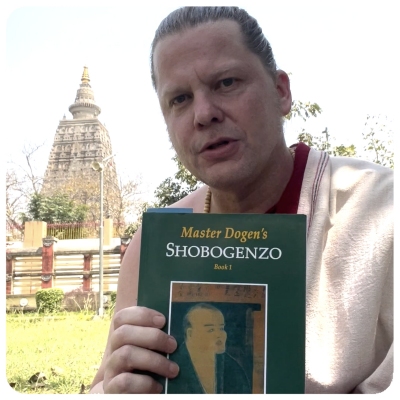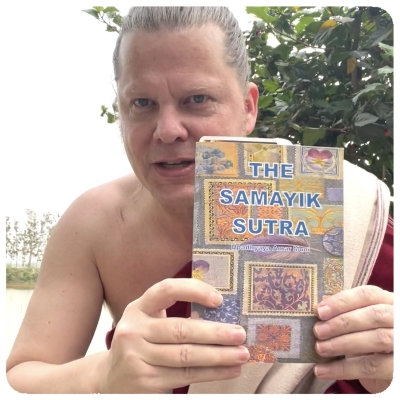
HEART SUTRA (Dōgen's Commentary)
[00:29:34] March 22nd, 2022
This is a special episode because, rather than being filmed in my office in Delhi, it is filmed in Bodh Gaya with Mahabodhi Temple just behind me.
In today's episode, we briefly jump ahead on the timeline from the early Theravada schools of Buddhism to Master Dogen bringing Soto Chan into Japan in the 13th century and, because of his accent, calling it "Zen." In other words, it was the beginning of what could be called "Japanese Zen."
One of the very few chants that are performed by the Zen Monks of Japan is that of the Hannya Shingyo. Dōgen believed it to be such an beautiful expression of the core and essence of the teachings of Lord Buddha, as well as being short and to the point, that chanting it was as much a tradition in early Zen as it was in Shingon, Tendai, and the various other schools of Japanese Buddhism.
Shobogenzo is a collection of lectures given by Dōgen to the monks of those earliest Zen Monasteries. The second "chapter" of Shobogenzo, in other words the second of his lectures recorded there, is one which he gave in the Temple which would later be known as Kōshōhōrin-ji, in Kyoto, in the summer of 1233 on the subject of The Heart of Great Wisdom Sutra, or Hannya Shingyo. In today's this episode, we'll read this lecture.
The music in today's episode, toward the end during the brief tour of Mahabodhi Temple, includes: The Heart Sutra in Chinese, performed by 黃慧音 (Imee Ooi), The Heart Sutra in Sanskrit, performed by Ramam Jorthy, Puja for the Eight Paradises, from the album Big Om of Tibet, Tibetan Bells by Henry Wolff & Nancy Hennings, and "Makalu" by Deuter.
The music in the beginning and the end is of this and all episodes of this series is from a particular recital of the medieval Japanese translation of The Heart of Great Wisdom Sutra, "Hannya Shingyo," with taiko drum accompaniment. To hear the rest of it, Click Here.

or

or listen through
or the RSS feed.
  |
 |
  |
     
|
